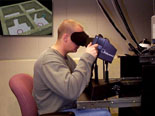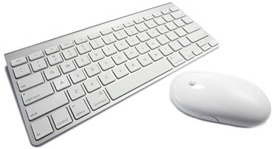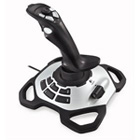|
|
 |
 |
 |
|
 |
Overview
Human-Computer interaction brings together humans and technology
in order to accomplish a task. It involves the processes, dialogues,
and actions that a user employs to interact with a computer in any
given environment.
Human-Computer Interfaces allow the user to input an instruction
to the computer. In turn, the computer should provide a response
or feedback to the user's input. Through input devices and output
devices such as displays, the user is able to see, hear, touch,
and recognize the interaction.
|
Human-Computer Interfaces
Input Devices
There are many different kinds of input devices that can facilitate
human-computer interaction. These input devices may include: keyboards,
mice, joysticks, and other devices.
Output Devices

Historically,
output devices have consisted of various types of displays. They
can range from computer monitors to the head-mounted displays worn
by users to interact with Virtual Environments.
Human-Computer Interfaces should:
- Match physiological characteristics and expertise of the user.
- Be appropriate for the task to be performed.
- Be suitable for the intended work environment.
Since people come in many differenct sizes and shapes, it should
come as no surprise that there is no such thing as a universal,
one-size-fits-all human-computer interface.
|
Virtual Environment Interfaces and Displays
 |
Virtual environments create a metaphor for the real world
that the user interacts with. With the aid of head-mounted
displays, datagloves, 3-D audio, haptic or tactile feedback,
and other devices, the individual can interact with a virtual
world which can simulate reality. |
These virtual environments can be used to create simulations
that can be used for many training or, perhaps, interacting with
prototypes that do not yet exist in the real world. Visit the Research Example to see more applications
of Virtual Environments.
 Movie Movie |
Research Example |
|
|
 |
|






